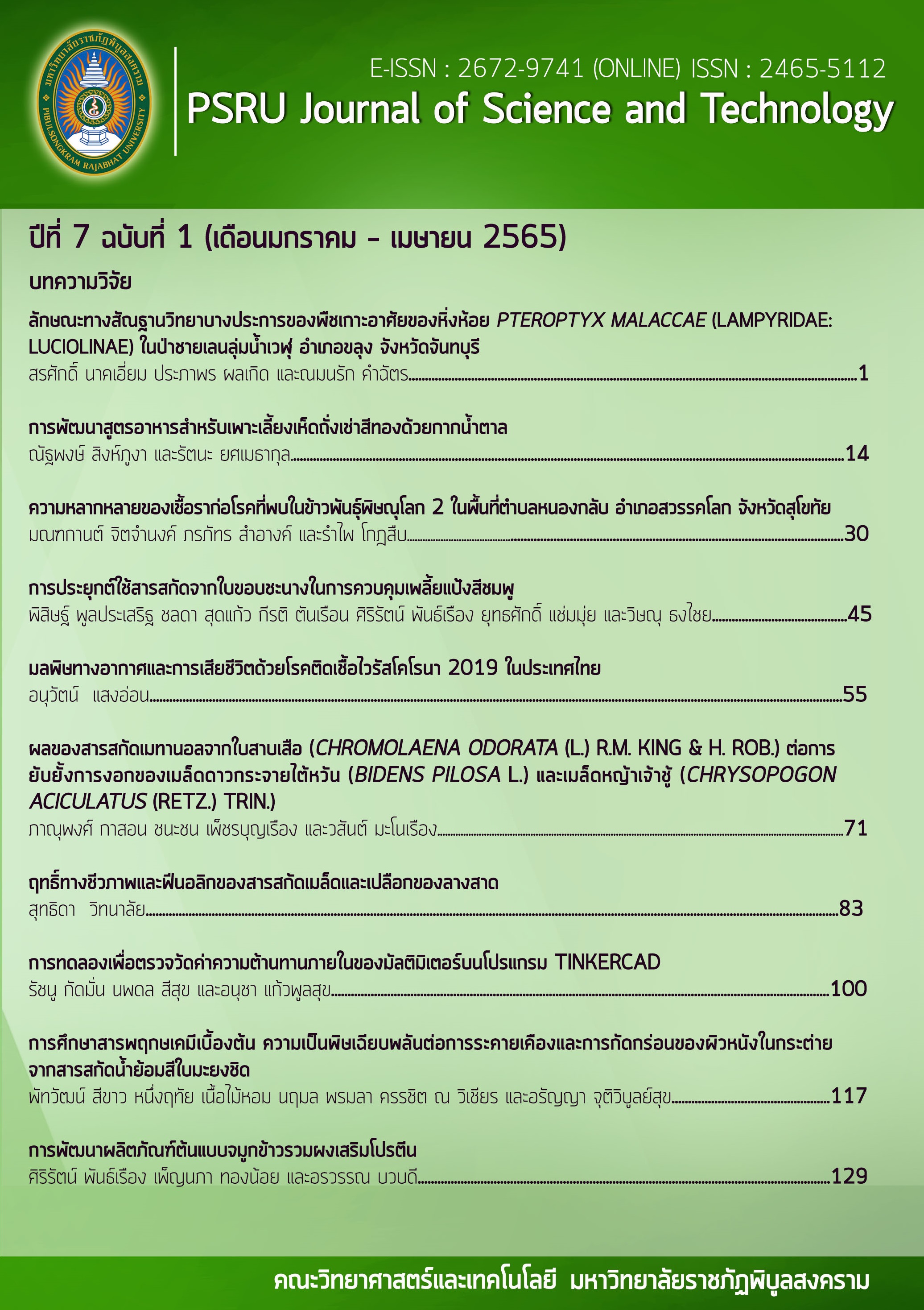AN EXPERIMENT TO MEASURE THE INTERNAL RESISTANCE OF A MULTIMETER ON THE TINKERCAD PROGRAM
Keywords:
Tinkercad program, Internal resistance, Multimeter, Experiment kitAbstract
This paper presents an experiment to measure the internal resistance of a multimeter in the Tinkercad program. This multimeter has three operating modes: ohmmeter mode, ammeter mode and voltmeter mode. The experiment is designed using a DC voltage source in ohmmeter mode as the input signal to the resistance to be measured. The relationship of the variables in a circuit is arranged in the form of a linear equation. The resistance analysis of the multimeter in each mode can be determined from the slope of the curve. The results showed that the ohmmeter mode and the ammeter mode have internal resistances of 100±1 mW and 100±33 mW, respectively, which are very low values. The voltmeter mode has an internal resistance of 100±1 MW which is very high resistance. It is also found that the ohmmeter mode has the 1.00±0.01 V DC voltage source. The properties of the resulting curves have good linearity. These experiments are suitable for applying to the experimental kit of students in the fields of electrical-electronics, physics and measurement technology.
References
CD800a. (n.d.) Retrieved from https://overseas.sanwameter.co.jp/pdf/catalog/digital_multimeters/CD800a_EN_catalog.pdf
Easyeda. (n.d.). Retrieved from www.easyeda.com.
Eryilmaz, S., & Deniz, G. (2021). Effect of Tinkercad on students' computational thinking skills and perceptions: A case of Ankara province. The Turkish Online Journal of Educational Technology, 20(1), 25-38.
Gingl, Z. & Mingesz, R. (2019). Voltmeter in series?. Phys. Educ., 54, 045017, 1-7.
Jeffrey, R.G. (2019). Estimating RC time constants using sound. The Physics Teacher, 57, 393-396.
King, J.G., & French, A.P. (1995). Using a multimeter to study an RC circuit. The Physics Teacher, 33, 188-189.
Kshirsagar, C., Kulal, V., Kudal, P., Kulkarni, A., & Kuche, K. (2021). IoT based temperature sensing through Tinkercad simulation platform. Journal of Emerging Technologies and Innovative Research, 8(6), e719-e724.
Luchaninov, D., Bazhenov, R., Sabirova, V., Mamyrova, M., & Zholdosheva, A. (2021). Online Training of Students of Applied Physics in the Field of Circuitry. J. Phys.: Conf. Ser., 1889, 022030, 1-6.
OrCAD. (n.d.). Retrieved from www.orcad.com.
Patel, K., Borole, S., Ramaneti K., Hejib, A., & Singh, R.R. (2020). Design and implementation of Sun Tracking Solar Panel and Smart Wiping Mechanism using Tinkercad. IOP Conf. Series: Materials Science and Engineering, 906, 012030, 1-12.
Pathare, S.R., Raghavendra, M.K., & Huli, S. (2017). Low-cost alternative for signal generators in the physics laboratory. The Physics Teacher, 55(5), 301-305.
Pili, U., Violanda, R., & Pili, J. (2019). Using a digital voltmeter and a smartphone camera to investigate the RC circuit. Phys. Educ., 54, 033004, 1-4.
Roberto, R., & Christopher, D. (2020). The iPad as a virtual oscilloscope for measuring time constants in RC and LR circuits. Phys. Educ., 55, 023003, 1-4.
Silar, R., Glasscock, M., Mitchell, B., & Ekey J.R. (2020). A fan-C exploration of RC circuits. The Physics Teacher, 58, 552-555.
Stojilovic, N., & Isaacs, D.E. (2018). Resistance of a digital voltmeter: teaching creative thinking through an inquiry-based lab. Phys. Educ., 53, 053005, 1-3.
Tennison, J.L., Gorlewicz, J.L., & Condoor, S.S. (2020, June). Project-based smart systems module for early-stage mechanical engineering students. Paper presents in 2020 ASEE Virtual Annual Conference Content Access, Virtual On line. 10.18260/1-2—35099.
Tinkercad. (n.d.). Retrieved from https://www.tinkercad.com.
YX-360TRF. (n.d.). Retrieved from https://www.sanwameter.co.jp/japan/pdf/catalog/analog_multitester/YX360TRF_EN_catalog.pdf
Downloads
Published
How to Cite
Issue
Section
License
Copyright (c) 2022 PSRU Journal of Science and Technology

This work is licensed under a Creative Commons Attribution-NonCommercial-NoDerivatives 4.0 International License.
กองบรรณาธิการขอสงวนสิทธิ์ในการปรับปรุงแก้ไขตัวอักษรและคำสะกดต่างๆ ที่ไม่ถูกต้อง และต้นฉบับที่ได้รับการตีพิมพ์ในวารสาร PSRU Journal of Science and Technology ถือเป็นกรรมสิทธิ์ของคณะวิทยาศาสตร์และเทคโนโลยี มหาวิทยาลัยราชภัฏพิบูลสงคราม และ
ผลการพิจารณาคัดเลือกบทความตีพิมพ์ในวารสารให้ถือมติของกองบรรณาธิการเป็นที่สิ้นสุด







